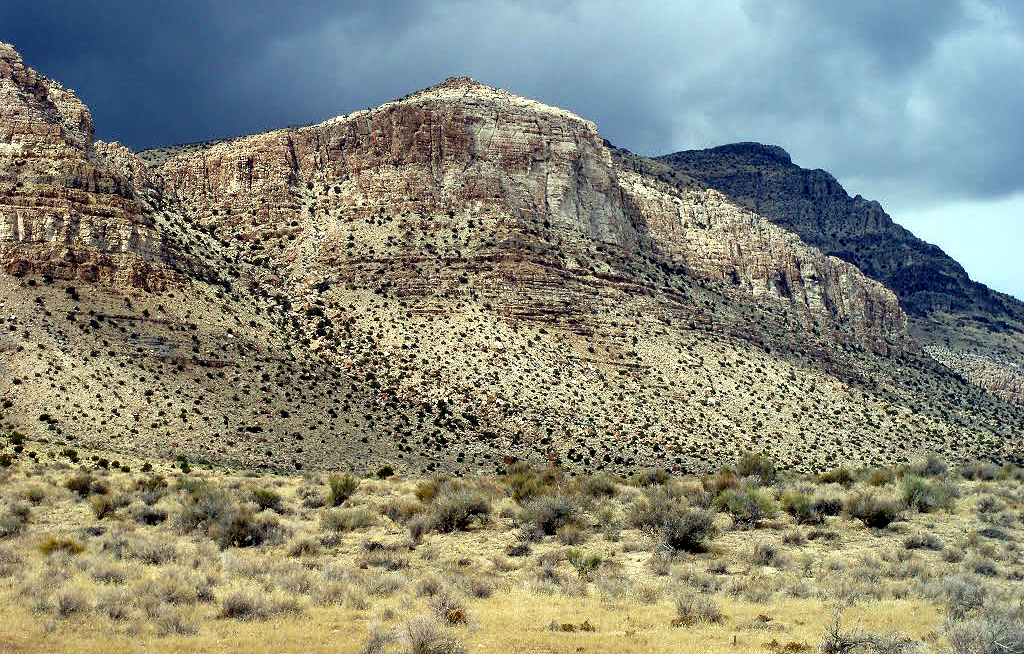
| A view slightly west of north near the base of Fossil Mountain (the slopes and cliff face at left of image) to the bold face of the mountain just to the north of Fossil Mountain, seen in the picture immediately preceding this one (at right side of that photograph). Fossil-bearing formations within this view include the lighter-colored strata along the lower slopes, composed of the lower Ordovician Kanosh Shale; and immediately above that, beginning at the first major, narrow, prominent ledge, and continuing up to the bold cliff face above, is the lower Ordovician Lehman Limestone. The lower Ordovician Kanosh Shale and Lehman Limestone produce prolific assemblages of brachiopods, ostracods (bivalved crustacean), sponges, trilobites, gastropods, pelcypods, cephalopods, graptolites, conodonts, echinoderms, corals, and bryozoans, primarily, that often form shell beds composed of nothing but a single variety of fossil organism; for example, the Kanosh Shale is justifiably famous for its thick shell beds containing the prolific remains of a single species of brachiopod, called scientifically Shoshonorthis michaelis. Other beds produce abundant ostracods, gastropods, trilobites, or echinoderms, to the exclusion of all of other invertebrate animal types. Fossil Mountain in Millard County, Utah, could well yield the most diverse lower Ordovician fossil sequence in North America. Image cropped and processed through photoshop from a photograph originally taken by an individual who goes by the cyber-moniker "rkahwoo." |